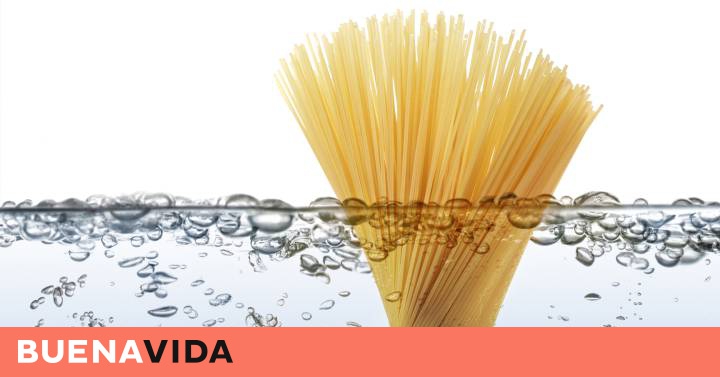A summer in Italy gives to receive many lessons on how to cook pasta from nonnas de armas to take. What one does not expect is that they suddenly affirm emphatically that risotto is superior to paella. To the question of "and why?", A well-founded answer: it is prepared with broth while the paella is made with water. "So the rice has more flavor." Silence in the room. There are no further questions, Your Honor.
But over time, national pride prompts one to ask questions with the intention of refuting the wisdom of an Italian cook-in-arms to take. "And if they defend rice prepared with broth so much, why do they only cook pasta with water?" Well, because there is also the pasta risottan . In other words, they also cook it with more than just tap water. The process is called mantecatura and comes from mantecare, which in Italian means "to give shape to a homogeneous, creamy and uniform mixture".
The secret of cooking pasta in two stages
Butter has been little done in Italian food houses, but now it is practiced again. Davide Bonato, chef at Gioia, one of Madrid's best-known transalpine restaurants, explains it. "It is a kind of little secret that comes from the grandmother's recipes and that quite a few restaurants are now recovering. In Gioia we risotto all the pasta and one of our last recipes are the 'pappardelle' with oysters and boletus," he says. In this case, what they do is reserve the water from the oysters to give the pasta a unique touch. "First we cook the 'pappardelle' in salted water in the usual way, then, when they lack a little to be al dente, we finish them in the oyster water so that they take on more sea flavor, along with some boletus and cheese fresh from Puglia burrata. We serve the pasta over a cream of red cabbage, katsuobushi (dried bonito) and a reduction of oyster sauce with a touch of mint, "says the chef.
The key to butter is precisely this second phase, in which, according to Bonato, "a wine, some citrus, a little cheese ..." is added to get the pasta dish to the table with an extra. Another fundamental trick is "that the temperature of the sauce in which you are going to put the pasta is kept at about 80 degrees. In this way, the pasta will absorb the flavor of the liquid in which you are going to finish cooking and will release starch to get that texture a little more dense. Logically, you should bear in mind that it is a little slower cooking and the three minutes it takes to be finished in boiling water can now be six, for example. " Whoever dares to try should know that the process is simplified when the pasta is fresh instead of dry, and when it is of good quality. "In fact, with butter you really realize the difference between good and bad pasta," concludes Bonato.
Francesco Ingargiola is another one of those young chefs who practice butter to get even tastier dishes at his Lettera Trattoria Moderna restaurant in Madrid. "We have a plate, which is the shortbread with Parmesan cheese." It is a very special plate because, when we have the pasta practically ready, we finish it in front of the client. What we do is use a torch to heat white rum and let the alcohol evaporate. We add it in a large wheel of Parmesan cheese and at that moment we introduce the pasta and stir until it is done, "explains Ingargiola.
On other occasions, the water is replaced from the beginning by broth. "I am from southern Italy and we eat a lot of small pasta there, which we call pastina . We cook this variety directly in a very reduced fish stock." The result is dishes with a very powerful flavor. "In some legume casseroles, for example beans or lentils, we also add a handful of pasta at the end. This is just one example to understand that the topic that pasta is only cooked in water with a little salt is not fulfilled always, "says Ingargiola.
Tomato sauce, better at the beginning than at the end
How does one of the most faithful companions to pasta, tomato sauce, fit into the exciting universe of butter ? Well, like a glove. Sandro Patara, cook of Premiata Forneria Ballaciones (Madrid) tells us how to prepare spaghetti with pommodoro . "We squeeze the juice of a fresh tomato and, on the other hand, we roast some San Marzano tomatoes in the oven until they are reduced as if they were a concentrate. When cooking the pasta, we cook it for a few minutes in water and when It is practically ready, we take it out and put it in a pan together with the tomato juice and two tablespoons of our homemade concentrate. The pasta absorbs the tomato flavor in this final phase. "
But these enrichment processes are not only the heritage of Italian chefs. Javier Aranda, with two Michelin stars for his restaurants Retama (hotel La Caminera, Torrenueva, Ciudad Real) and Gaytán (Madrid), and which also runs La Cabra (Madrid), shows that haute cuisine does not disgust butter . "We make a short broth of ham in which we cook the fresh 'tagliatelle' that we make in the restaurant itself and that accompanies a plate of tear peas. In this way, the pasta acquires a fantastic flavor," he explains. An idea to try at home. But it's not all a flashy kitchen thing, the landlady can also be enriched with some recipe to risottar the pasta and get a printing dish to enjoy at home as if we were in a Sicilian osteria. What we need is ...
You can follow Buenavida on Facebook, Twitter, Instagram or subscribe here to the Newsletter.

